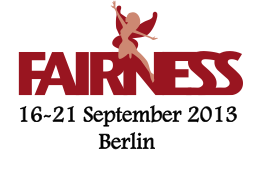Speaker
Dr
Karin Schönning
(Dept. of Physics and Astronomy, Uppsala University)
Description
Whereas the strong interaction is successfully described by perturbative QCD for processes with large scales, QCD in the confinement domain remains one of the most challenging problems in contemporary physics. Generally the scale of a specific process needs to be larger than the QCD cut-off (~200 MeV) in order to be treated perturbatively. The mass of the strange quark (~150 MeV), is very close to the QCD cut-off and the creation of a strange-antistrange pair is therefore a suitable process to study in order to understand confinement QCD.
Hyperons contain one or more strange quarks and the creation of a hyperon-antihyperon pair in antiproton-proton interactions involves the annihilation of a light (u or d) quark-antiquark pair and a subsequent creation of a strange-antistrange pair. Hyperon production can be discussed in terms of the OZI rule, which states that processes with disconnected quark lines are suppressed. By comparing several reactions involving different quark flavours the OZI rule can be tested for different levels of disconnected quark-line diagrams separately.
Furthermore, the parity violating weak decay of most ground state hyperons introduces an asymmetry in the distribution of the decay particles. This is quantified by the decay asymmetry parameter and gives access to spin degrees of freedom for these processes, e.g. antihyperon/hyperon polarisation and spin correlations. One open question is how these observables relate to the underlying degrees of freedom.
All strange hyperons, as well as single charmed hyperons are energetically accessible for the PANDA experiment at HESR, FAIR. A systematic investigation of these reactions will bring new information on single and multiple strangeness production and its dependence on spin observables. In particular, above 2 GeV/c, practically nothing is known about the hyperon angular distributions and spin observables. Simulation studies performed by the Uppsala group show that the differential cross sections as well as the spin observables can be well reconstructed with PANDA, for strangeness channels as well for the the single charmed. Results from the simulations will be shown.
Primary author
Dr
Karin Schönning
(Dept. of Physics and Astronomy, Uppsala University)
Co-author
Dr
Erik Thomé
(Uppsala University)

